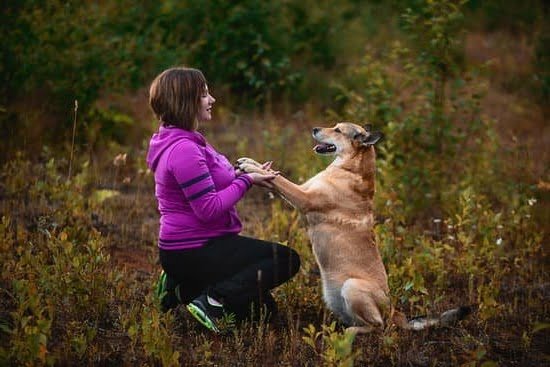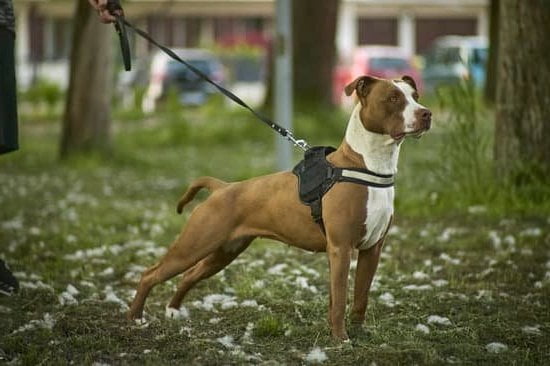Introduction
Dog training scents can play an essential role in the success of your training program. These smells provide a strong sense of reinforcement to your pup and make it easier for them to recall given commands. But, not just any smell will do- different scents have different implications and can be used to achieve different results during the course of dog training.
The use of scents in dog training offers a variety of advantages, allowing trainers to customize their approach according to their pup’s individual temperament, ability level, and desired outcomes. For instance, familiar scents can provide calming and focusing effects on puppies who are feeling overwhelmed or distracted by the new environment of training. Additionally, certain types of smells can accelerate learning for pups that tend to get bored quickly or tire easily from repetitive drills. Furthermore, olfactory cues are excellent tools for associating particular activities with rewards; this is essential for creating positive behavior responses that facilitate new skill acquisition over time. Finally, fragrant oils such as lavender may encourage feelings of trust and security in pups by providing comfort away from home or during unfamiliar exercises.
In summary, canine trainers should take advantage of the unique benefits afforded by scents when designing their teaching plan. By incorporating familiar smells into their routine, pet parents can strengthen positive behaviors and reinforce important commands more effectively than with traditional methods alone.
Different Elements of Dog Training Scents and Why They’re Important
Dog training scents are an important element in the process of training dogs. This is because scent is one of the key behaviors that dogs use to communicate with each other, both consciously and unconsciously. While humans may rely on words or other physical signals to convey messages, dogs primarily use their noses to make sense of their environment. Not only can dog trainers make use of this behavior by exposing a dog to different scents during training sessions, but they can also take advantage of naturally occurring smells as well.
One way to incorporate different dog training scents is by introducing new objects with a variety of odors into a session. For example, when introducing a new command or teaching a new behavior, the trainer could place the object near the dog and allow it to investigate the smells. This technique allows the dog to become more familiar with certain commands and behaviors, boosting their motivation for learning tasks quickly and efficiently.
The second way for trainers to incorporate different dog training scents is through positive reinforcement such as treats or toys with unique aromas associated with them. Treats provide positive motivation; however, having scented treats specifically associated with certain behaviors or commands will ensure that it becomes easier for your pet to respond accordingly during their next evaluation. Similarly, if toys have distinct aromas tied to them during training sessions – like tying a specific toy’s aroma with retrieving activities – this can help increase speed and accuracy for desired behaviors as well as develop an association between rewards and obedience cues quicker than just treats alone.
In conclusion, using dog training scents is an effective and efficient method of encouraging learnable behaviors while simultaneously conditioning obedient responses from your pet companion quickly and accurately. By incorporating odors both purposefully (through specially-chosen items) and naturally (through common environmental occurrences), you will be able open up exciting new avenues of communication between you and your four-legged friend!
An Overview of the Different Types of Scents and their Uses
Dog training scents can be a very effective tool in conditioning pets to obey commands and achieve desired behaviors. The different types of scents used for dog training vary in their purpose, from calming anxiety to increasing alertness.
Citronella is often used as an unpleasant odor to deter dogs from certain behavior such as barking or chewing. It is available as a spray or collar, both of which work by releasing the scent upon detection of certain noises or activities. Another type of scent that may be used to discourage bad behavior is bitter apple spray. This product has an unpleasant taste and smell so when your dog interacts with an item they shouldn’t, they are put off by the negative sensation associated with the spray.
Essential oils can also be used in dog training. Some such as lavender, frankincense, and chamomile are thought to have calming effects which can help soothe anxious dogs during storms or while they are staying at unfamiliar places away from home. Whilst on the other hand, citrus flavored essential oils like orange and tangerine may act as stimulants which can increase alertness and focus when required – such as during competitions or agility courses. Lastly, peppermint oil is said to help maintain neurological balance and ease pain if applied topically on a dog’s skin for sore muscles or arthritis.
Apart from aiding socialization skills and obedience training for domestic purposes, working dogs are also exposed to various odors when undergoing police force or military service training – teaching them how to detect explosions, drugs or even search for missing humans in areas such as forests or collapsed buildings. Professional dog trainers use several different scents including chocolate truffle extract, acetone (a common component of explosives), opium (for drug detection) and putrescine & cadaverine (to locate dead bodies). Although unpleasant smelling in nature, these aromas have proven themselves invaluable in scenarios where precision is key!
Introducing Your Dog to Scent Training
Scent training your dog is an effective way to get him or her to obey commands and learn new skills. It involves using different scents, such as essential oils, to help your dog recognize a specific location or behavior. The process of scent training is simple and can be very rewarding for you and your pup if done correctly.
One of the first steps in becoming successful at scent training is to identify which scents you select. While there are different types of smells, some of the most effective ones used by experienced trainers include lemon, peppermint, and valerian root essential oils. These scents create a calming effect on the dog while still increasing their learning potential. Additionally, ensure that whichever type of oil you’re using has been tested for safety before introducing it to your pooch.
Once this step has been completed, it’s important to familiarize yourself with the techniques used for scent training. This includes techniques such as establishing a verbal command with each smell and utilizing conditioning techniques like positive reinforcement or clicker-based training. Also, pay attention to the timing of giving commands when paired with certain scents so that the habits formed are much easier for the pup to follow successfully. Moreover, focus on associating one location – be it indoors or outdoors- along with each smell so that your pup associates those areas with specific commands rather than locations without odors present..
Finally, familiarize yourself with strategies used in scent training so that you maximize its effectiveness while keeping safety as a top priority. Utilizing basic knowledge of canine behavior cues allows us to enjoy successful results right away since dogs can quickly decipher between numerous subtle expressions during their session with us. At home try allowing free playtime as these periods can help prevent stress overload from occurring during actual scent coaching sessions; this gives us an opportunity to observe how our pups interact when given these types of challenges before venturing out anywhere else . Making sure that our four-legged friends stay safe is always important when working together!
A Comprehensive Step-by-Step Guide to Scent Training
Dog training scents can be used to teach your pup behaviors such as staying in one place, following commands, and responding quickly to cues. While this type of training can be difficult for some owners, it can create an incredibly close bond between you and your pup. Learning how to use scent-training is a powerful step towards bonding with your pet.
In order to start scent training your dog, you first need to understand how canine noses work. Dogs have far more sensors in their sniffers than humans do; this allows them to detect smells from farther away and from different directions than we are able to. Scent training will help accustom them to the smells of your home or environment, which may be comforting for some pups who suffer from anxiety. Using scents for dog training ultimately helps develop familiarity and connection between you and your pup.
When starting out, familiarize yourself with the concept of “marker scents”: these are used as cues during activities such as recall exercises or stay commands. Your marker scents should have associations that last longer than when food rewards are used—for example using the same type of food each time the command is given. As dogs learn faster with repeated experiences and positive reinforcement, it is important that they receive consistent feedback while they get accustomed to certain smells.
Next comes their conditioning period where setting up specific boundaries with aromas is essential—make sure these echoes match the boundaries you want your pup to adhere by when mastering cues like sit or stay commands. You can also use multiple aromas within a single space based on what behavior you wish for them to learn—making sure that each scent signifies a different rule or instruction for them understand easily over time.. Finally, set practice schedules depending on your pup’s needs so that scent-training becomes second nature for both of you!
Troubleshooting and Tips for Enhancing Scent Training Sessions
Dog training has come a long way in recent years, and one of the most effective methods for teaching canines commands is scent training. This approach utilizes the power of smells to help your dog recognize specific instructions. By introducing a particular odor associated with a specific task or command, you can quickly teach your pup to respond correctly in various situations. While scent training is often easy and straightforward, occasional issues can be encountered—so here are some troubleshooting tips and tricks to enhance your pup’s odor-based sessions.
One thing that may interfere with successful scent training is introducing too many smells at once. If your pup’s attention and focus on any given aroma decreases, try reducing the number of different scents involved in their session until new levels of comprehension and recall are achieved. Also important is including sufficient variety when assigning individual smells to certain tasks or commands. Repetition is key when using scents to train your dog, but it pays off to alternate between related odors each time they work on a particular task or behavior so as not to confuse them. Furthermore, once a sense memory has been established, make sure you don’t switch up the smell later on if you don’t want them getting confused!
Finally, if you ever find yourself stuck while teaching your dog odor-related lessons or running into frustrating roadblocks in the process, seek advice from an experienced canine professional who specializes in scent training. With their guidance and expertise, you’ll eventually start noticing improvements in how quickly and well your pup responds to each assigned aroma.
Maximizing Benefits of Scent Training for Obedience Training
Dog owners should be aware of the potential benefits scent training can provide as part of their dog’s obedience training. Through scent training, dogs can not only quickly discriminate between stimuli that possess different scents, but this specialized type of learning also helps develop their hierarchy of information processing and memory recall capabilities. It follows then, the more proficient the dog’s ability to remember and recognize a variety of smells, the greater its capacity for tasks that involve decision-making processes.
Scent training not only strengthens a dog’s mental capacities but also its sensory awareness. Dogs who are trained through scent exercises display heightened degrees of alertness and readiness because they become well accustomed to detecting odors that frequently require action on their part. While there are various scents available to use in one’s scent-training program, owners might choose to reinforce certain behaviors by reinforcing with a strong aroma such as citronella or vanilla extract when these same commands are used in different settings outside the home environment.
In addition to reinforcing obedience with scents, trainers may incorporate other qualifications as well such as verbal praise or rewards. When used properly with positive reinforcements like treats, toys or chews; dogs will look forward to engaging with their human owners during sessions and beyond keeping them attentive throughout training sessions while collecting tangible rewards along the way. Overall the use of scent is a powerful tool that helps create stronger relationships between pet owner and furry friend
Not only should owners utilize scents when reinforcing certain behaviors during obedience training sessions, but they can also use it in diverse settings outside the home environment too as means of prompting certain responses from their canine companions. For instance, if a command that usually requires a response such as sit or down is used in an outdoor setting far away from where regular practice takes place; providing some sort of reward associated with good behavior is beneficial too. This could include offering up toys or small treats after successfully responding to said command from afar without fail.. Additionally, verbal praise may be incorporated into one’s training routine upon completion or recognition of such achievement even furthering one’s commitment for lifelong learning for pups near and far.
Conclusion
In conclusion, harnessing the power of scents to train dogs can have profound positive effects on obedience training outcomes. By pairing dog scents with desirable behaviors, dogs learn faster and respond better to commands. As a result, they are more likely to become obedient, agreeable, and well-mannered companions. It is important that any scent-focused obedience training be done in a safe and supervised setting so as not to unintentionally endanger the dog or its owners. Proper scent selection may also improve results, as using strong-smelling scents such as eucalyptus or smoky bacon can help capture the attention of the dog and distract them from outside influences or distractions. When it comes time for your next obedience training session, consider incorporating scents into your routine for improved success!

Welcome to the blog! I am a professional dog trainer and have been working with dogs for many years. In this blog, I will be discussing various topics related to dog training, including tips, tricks, and advice. I hope you find this information helpful and informative. Thanks for reading!





